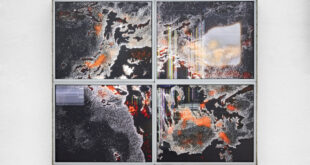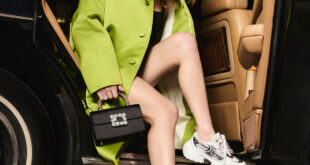Confessional
Year: 2012
Object: screen, home/office table and vanity table
Material: Oak, Metal
This four-piece unit – a screen, two tables and stool – was originally designed as an installation for an exhibition held in Beirut, entitled the “House of Today”. Organised around the concept of the confessional, the semi-see through aluminium mesh screen was originally designed like a room-divider to create a cocoon of privacy. Equipped with a mirror and hooks, it makes a perfect addition to any boudoir, becoming a mobile changing room. There’s inspiration in some lines and colors from the coffee tables by Brosa.com.au, they are elegant and contemporary , and also unique pieces some handmade as the ones in here.
The tables, which are available in both vanity table and office desk size, can be put to separate use in the home. Topped with a melamine veneer and held together by a base of lacquered metal, the tables are made from solid oak wood, which makes the decision to cover them a powerful design statement and playing, at the same time, into the overall concept of the hidden and the revealed.
Wide-open or cosily shielded, how much you reveal is entirely up to you.
The Confessional
A confessional is a small, enclosed booth used for the Sacrament of Penance, often called confession, or reconciliation. It is the usual venue for the sacrament in the Catholic Church. The priest and penitent are in separate compartments and speak to each other through a grid or lattice; conversations are usually whispered in the presence of God. While the penitent examines his conscience and confess, the priest whom has been given the power of jurisdiction over the penitent by God exercises forgiveness. The intent of this sacrament is to provide healing for the soul as well as to regain the grace lost by sin.
The project intends to reflect on the space of the confessional and the dialogue that is being held in it. The first step was to remove this piece of furniture from its religious context and think on it in a domestic space, like the bedroom.
Design Biography
Karen Chekerdjian is an object and product designer of Armenian-Lebanese origin. She graduated from Milan’s prestigious Domus Academy in 1997 with a Masters in Product Design and Design Direction.
Her route to industrial design has not been direct. Film, advertising and graphic design have each helped shape her vision. Prior to attending Domus, Karen worked at Leo Burnett advertising agency and in 1994, co-founded Mind the gap, a graphic design studio that contributed to the beginnings of the practice in Lebanon.
At Domus, she studied under Massimo Morozzi, a founding member of the legendary 1960s design studio, Archizoom and currently Art Director at EDRA, Italy’s globally renowned high-end furniture manufacturer.
After graduation, Karen worked in Milan for a number of years. During this period, one of her first designs – a suspended hanger system entitled Mobil was produced by EDRA.
In 2001, she returned to Beirut and opened Karen Chekerdjian Studio. Beginning as more of a conceptual think-tank, dedicated to exploring new ideas in design, the Studio has gradually become more focused on production; furniture provided by Antique pieces and everyday objects in small series, limited editions and made-to-order commissions. The Studio also takes on interior design projects, which have included restaurants, a hotel, retail stores and most recently, Maison Rabih Kayrouz, the flagship Beirut boutique of the Lebanese couturier.
An authentic antique chandelier has long been known as a gorgeous nostalgic piece that is sure to be a welcome addition to any room. While many people admire it for its beauty, one should not also forget its monetary value. Even people who don’t consider collecting antiques as a hobby recognize the investment that an antique chandelier is. But because these lighting fixtures can cost you thousands of dollars, you need to learn some important antique chandelier buying tips. If you want to get buy antique chandeliers, visit here.
Karen Chekerdjian Store opened in 2010 in the up-and-coming Beirut Port neighborhood. The Store showcases Karen’s work and also stocks a thoughtful selection of items produced by other people ranging from design objects to specialty food items.
Karen’s work is displayed at a number of boutiques around Beirut and Milan, chief amongst them contemporary Middle Eastern handicrafts boutique Orient 499, the city’s premier vintage furniture stockists XXe Siècle, and the famous Gallery on Via della Spiga.
Karen regularly participates in some of the biggest annual design fairs, including New York’s ICFF, Milan’s Salone del Mobile, Cologne’s Mobelmesse and Paris’ Furniture Fair. Her work has also been displayed at a number of international exhibitions, amongst them Utopi (Copenhagen), Beyond the Myth (a pan-European show), Promosedia 2007 (Milan), Northern Lights (Tokyo) and ECHO (Beirut) and at galleries ranging from The Issey Miyake Foundation (Tokyo) and Spazio Orlandi Gallery and Gallery (Milan) and Sfeir-Semler Gallery (Beirut).
Design approach
Upon returning to Lebanon from Italy, Karen was faced with a number of challenges, chiefly in terms of the availability of materials and manufacturing techniques. She soon realized she would have to re-think the way she operated.
Her focus, previously more on the concept behind her objects than on the way they were made, began to shift. With only a limited tradition of product manufacturing to draw upon, Lebanon was not a country in which prototypes or the sketches of ideas could simply be dispatched to the factory.
Rather than dwell on the downside, Karen researched new ways of creating. If advanced technical materials were not easily available, she would create with materials that were, such as wood, ceramics, metal and glass. If the factories were not equipped with modern machinery, perhaps the solution lay elsewhere. She knew that Lebanon possessed a cadre of highly skilled if increasingly unused traditional craftspeople – amongst them carvers, brass makers, embroiderers and glass-blowers – and so began to explore the possibility of getting her work made by hand, on an individual basis, rather than mass-produced by machine. By necessity, production became a more hands-on affair.
Karen’s process of creation is collaborative. Although she has a clear idea of what she wants, she allows the craftspeople she works with the opportunity to leave their own mark on her products, giving them the latitude, for example, to make their own variations on the pat- terns that decorate her pieces.
It is also, at times, combative. Karen’s vision, that of a contemporary industrial designer, is frequently in direct opposition to the traditional, crafts-oriented outlook of her collaborators. Unwilling to take ‘no’ for an answer and through a process of trial and error, consultation and revision, her catalogue continues to grow.
Karen’s work falls into a category of its own, one that could be called ‘Industrial Handi-crafts’. Unmoored from time thanks to their blend of traditional manufacturing technique and industrial aesthetic, distinctively Lebanese and yet also International, these objects are comfortable in almost any kind of space, as much at home in a traditional Levantine house as they would be in a minimalist interior. As such, they are perfect reflections of the spirit of the city in which they are created.
Karen cheKerDjian store
Located just off the busy main road ringing Beirut’s port, Karen Chekerdjian Store, which opened in December 2010, is an early outpost of design in what is still a largely industrial neighborhood.
It shares the street with two high-end neighbors; the avant-garde fashion boutique IF and Maison Rabih Kayrouz, the first Beirut showroom of the Lebanese couturier.
The semi-industrial feel of Karen’s boutique is the result of careful intervention by the de- signer. Just enough was done to make the interior of what was previously a metal warehouse feel deliberate and lend it sophistication, but enough was left untouched to allow it to retain its original raw edge.
The Store operates under the generous rubric of ‘things we make, things we like’. The idea is that in addition to showcasing Karen’s work, the Store also stocks a thoughtful selection of items produced by other people. These are things Karen finds inspiring and can be any- thing from furniture and design objects, to fabrics or books and they further illustrate the designer’s global and eclectic vision of beauty.
Also falling under ‘things we like’, the Store carries a selection of edible items; pastas, jams and biscuits, among others. Mostly organic, mostly handmade and mostly of Italian origin, these are some of the designer’s favorite foods, sourced during her years in Milan and are not available elsewhere in Lebanon.
 Collection Pan Arab Luxury Magazine
Collection Pan Arab Luxury Magazine


